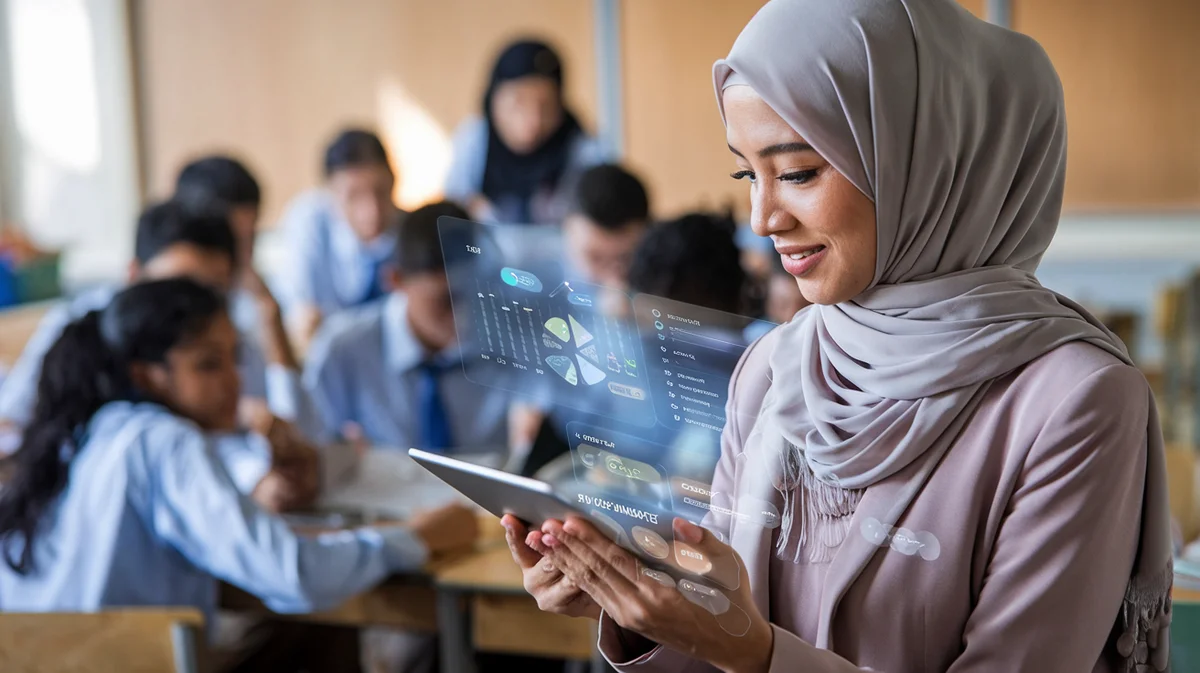Teacher Training in Inclusive Education: Lessons Learned


wp:paragraph
Inclusive education is no longer a distant aspiration — it is a global imperative. As we at UNOWA continue to empower institutions, educators, and students with innovative educational solutions, we recognize that teacher training in inclusive education is the linchpin for sustainable and meaningful transformation. Drawing on global reform projects, recent research, and our own experience across the EU, MENA, and CIS regions, we share key lessons learned, actionable insights, and proven strategies to shape the future of inclusive, locally adaptable, and future-ready education.
/wp:paragraph
wp:heading {"level":2}
The Evolving Landscape of Inclusive Education
/wp:heading
wp:paragraph
Inclusive education ensures that every learner — regardless of ability, background, or circumstance — has equitable access to quality learning. Over the past decade, international frameworks such as the UN Convention on the Rights of Persons with Disabilities and the Sustainable Development Goals have accelerated policy reforms and investments in inclusive education worldwide (UNESCO).
/wp:paragraph
wp:paragraph
Yet, as highlighted by the European Agency for Special Needs and Inclusive Education, a persistent gap remains between policy and practice. Only about 20% of teachers in Europe have participated in continuous professional development (CPD) focused on inclusive or multicultural teaching, and many educators report feeling underprepared for the realities of diverse classrooms.
/wp:paragraph
wp:heading {"level":2}
Key Lessons Learned from Global Reform Projects
/wp:heading
wp:heading {"level":3}
1. Comprehensive Teacher Training is Essential
/wp:heading
wp:paragraph
Our experience and research confirm that comprehensive, ongoing teacher training is the foundation of successful inclusive education. Effective programs go beyond initial certification, offering continuous professional development tailored to evolving classroom realities. For example, the European Trade Union Committee for Education (ETUCE) strongly advocates for free, ongoing training to ensure teachers are equipped with the latest strategies and methodologies (ETUCE Action Plan).
/wp:paragraph
wp:heading {"level":4}
Practical Takeaway:
/wp:heading
wp:list
- Invest in both initial and ongoing training that covers practical strategies for differentiation, universal design for learning (UDL), and positive behavior support.
/wp:list
wp:heading {"level":3}
2. Localized Approaches Yield Better Results
/wp:heading
wp:paragraph
While international guidelines provide a strong foundation, locally adaptable solutions are crucial. In countries like Malta and Estonia, national reforms have succeeded by integrating local languages, cultural contexts, and community needs into teacher training modules. In the MENA region, countries such as the UAE and Qatar have launched national inclusion strategies that align with local values and educational standards (UAE Ministry of Education).
/wp:paragraph
wp:heading {"level":4}
Practical Takeaway:
/wp:heading
wp:list
- Customize training content to reflect local languages, cultures, and policy frameworks, ensuring relevance and buy-in from educators.
/wp:list
wp:heading {"level":3}
3. Collaboration and Peer Learning Drive Change
/wp:heading
wp:paragraph
Teachers thrive when they learn from each other. Peer mentoring, collaborative lesson planning, and professional learning communities have proven effective in Poland, Latvia, and Kazakhstan, where educators share best practices and support each other in real time.
/wp:paragraph
wp:heading {"level":4}
Practical Takeaway:
/wp:heading
wp:list
- Facilitate peer networks and communities of practice to foster ongoing support and innovation among teachers.
/wp:list
wp:heading {"level":3}
4. Addressing Barriers to Participation
/wp:heading
wp:paragraph
Despite policy commitments, barriers such as time constraints, lack of resources, and insufficient institutional support often limit teacher participation in inclusive education training. In the EU, only half of education systems specifically target particular learner groups in their curricula, often resulting in generic approaches that miss specific needs.
/wp:paragraph
wp:heading {"level":4}
Practical Takeaway:
/wp:heading
wp:list
- Identify and address barriers — such as scheduling flexibility, financial incentives, and leadership support — to boost teacher engagement in training.
/wp:list
wp:heading {"level":3}
5. Data-Driven Decision Making
/wp:heading
wp:paragraph
Robust data collection and analytics are vital for monitoring progress and identifying gaps. The European Commission’s annual reports and the Erasmus+ program provide valuable benchmarks for scaling up inclusive practices (Erasmus+).
/wp:paragraph
wp:heading {"level":4}
Practical Takeaway:
/wp:heading
wp:list
- Leverage analytics to track training outcomes, student progress, and areas for improvement, ensuring accountability and continuous refinement.
/wp:list
wp:heading {"level":2}
Regional Insights: EU, MENA, and CIS
/wp:heading
wp:heading {"level":3}
European Union
/wp:heading
wp:paragraph
Countries like Bulgaria, Lithuania, and Serbia have made strides by revising curricula to reinforce diversity and inclusion. However, only about half of EU systems specifically address the needs of learners with disabilities or from minority backgrounds. Recent initiatives aim to extend inclusive practices to 80 secondary schools and 1,200 students by 2025, signaling a commitment to scaling up impact.
/wp:paragraph
wp:heading {"level":3}
MENA Region
/wp:heading
wp:paragraph
Saudi Arabia, UAE, Qatar, and Oman are investing in national strategies and partnerships to build inclusive education systems. The UAE’s “School for All” policy and Qatar’s inclusive education framework are notable examples, emphasizing teacher training, accessible infrastructure, and community engagement.
/wp:paragraph
wp:heading {"level":3}
CIS Countries
/wp:heading
wp:paragraph
Kazakhstan, Uzbekistan, Armenia, and others are at various stages of reform. Kazakhstan’s national strategy includes specialized teacher training and the development of inclusive curricula, while Moldova and Georgia are piloting inclusive education models in partnership with international organizations.
/wp:paragraph
wp:heading {"level":2}
Best Practices for Effective Teacher Training
/wp:heading
wp:list
- Universal Design for Learning (UDL): Training teachers to design flexible curricula that accommodate diverse learning needs.
- Differentiated Instruction: Equipping educators with tools to tailor instruction to individual student profiles.
- Assistive Technology: Integrating digital tools and resources to support learners with disabilities.
- Cultural Competence: Building awareness and skills for teaching in multicultural and multilingual settings.
- Family and Community Engagement: Involving parents and local communities in the educational process.
/wp:list
wp:heading {"level":2}
Expert Insights
/wp:heading
wp:quote
“Inclusive education is not just about placing students with disabilities in mainstream classrooms. It’s about transforming the entire system to respond to the diversity of all learners.” — European Agency for Special Needs and Inclusive Education
/wp:quote
wp:quote
“Teachers are the architects of inclusive classrooms. Their training, mindset, and ongoing support are critical to making inclusion a reality.” — UNESCO Global Education Monitoring Report
/wp:quote
wp:heading {"level":2}
UNOWA’s Commitment to Inclusive Education
/wp:heading
wp:paragraph
At UNOWA, we are proud to be at the forefront of developing and delivering complete educational systems — including our MIKKO inclusive education platform, STEM innovation labs, curriculum-aligned content, and advanced analytics. Our solutions are adaptable to national standards and designed for large-scale impact, ensuring that every child, regardless of ability, has the opportunity to thrive.
/wp:paragraph
wp:paragraph
With over 15 years of experience and more than 300 national projects delivered, we understand the complexities and opportunities of inclusive education. We work closely with ministries, institutions, and educators to design training programs that are locally relevant, globally informed, and future-ready.
/wp:paragraph
wp:paragraph
Learn more about our approach and solutions at UNOWA.
/wp:paragraph
wp:heading {"level":2}
Frequently Asked Questions
/wp:heading
wp:heading {"level":3}
What is inclusive education?
/wp:heading
wp:paragraph
Inclusive education is an approach that ensures all students, regardless of their abilities or backgrounds, learn together in mainstream classrooms with appropriate support and accommodations.
/wp:paragraph
wp:heading {"level":3}
Why is teacher training in inclusive education important?
/wp:heading
wp:paragraph
Teacher training equips educators with the knowledge, skills, and confidence to create inclusive learning environments, adapt instruction, and support diverse learners effectively.
/wp:paragraph
wp:heading {"level":3}
What are the main challenges in implementing inclusive education?
/wp:heading
wp:paragraph
Common challenges include lack of teacher training, insufficient resources, rigid curricula, and societal attitudes. Addressing these requires systemic change, ongoing professional development, and strong leadership.
/wp:paragraph
wp:heading {"level":3}
How can schools and ministries get started with inclusive education reform?
/wp:heading
wp:paragraph
Begin with a needs assessment, invest in comprehensive teacher training, adapt curricula, and foster collaboration among stakeholders. Leverage data and analytics to monitor progress and refine strategies.
/wp:paragraph
wp:heading {"level":3}
Where can I find more resources on inclusive education?
/wp:heading
wp:list
- UNOWA
- European Agency for Special Needs and Inclusive Education
- UNESCO: Inclusion in Education
- Erasmus+ Inclusive Education
- ETUCE Action Plan on Equality, Diversity, and Inclusion
/wp:list
wp:paragraph
Empowering educators to create a brighter future for all students is at the heart of our mission. Let’s work together to transform learning experiences for the better — one classroom, one teacher, and one student at a time.
/wp:paragraph








